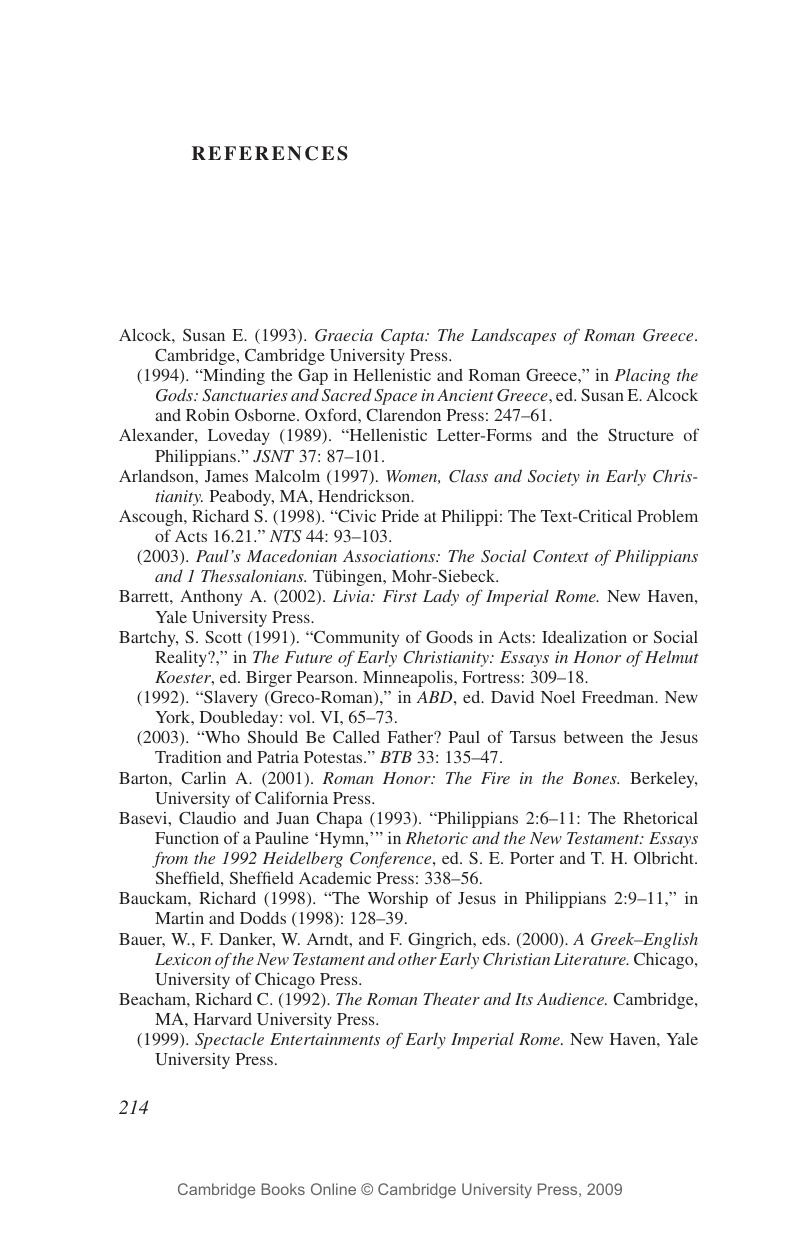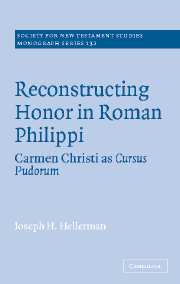Book contents
- Frontmatter
- Contents
- Acknowledgments
- List of abbreviations
- Introduction
- 1 Roman social organization
- 2 Preoccupation with honor and the cursus honorum
- 3 The Roman colony at Philippi
- 4 Honor and status in Philippi
- 5 Acts and Philippians
- 6 Carmen Christi as cursus pudorum
- 7 Summary and conclusion
- Notes
- References
- Index of ancient sources
- Index of modern authors
- Subject index
- References
References
Published online by Cambridge University Press: 22 September 2009
- Frontmatter
- Contents
- Acknowledgments
- List of abbreviations
- Introduction
- 1 Roman social organization
- 2 Preoccupation with honor and the cursus honorum
- 3 The Roman colony at Philippi
- 4 Honor and status in Philippi
- 5 Acts and Philippians
- 6 Carmen Christi as cursus pudorum
- 7 Summary and conclusion
- Notes
- References
- Index of ancient sources
- Index of modern authors
- Subject index
- References
Summary

- Type
- Chapter
- Information
- Reconstructing Honor in Roman PhilippiCarmen Christi as Cursus Pudorum, pp. 214 - 225Publisher: Cambridge University PressPrint publication year: 2005



